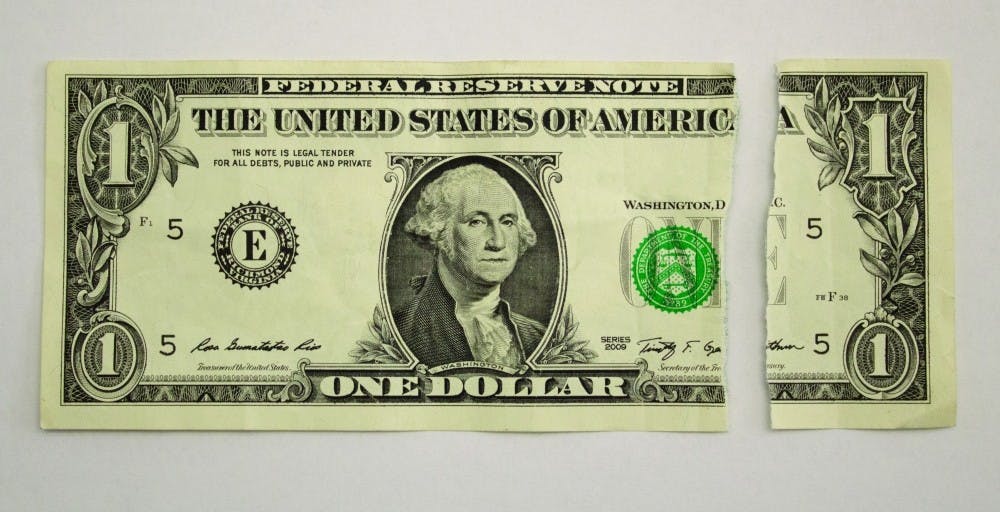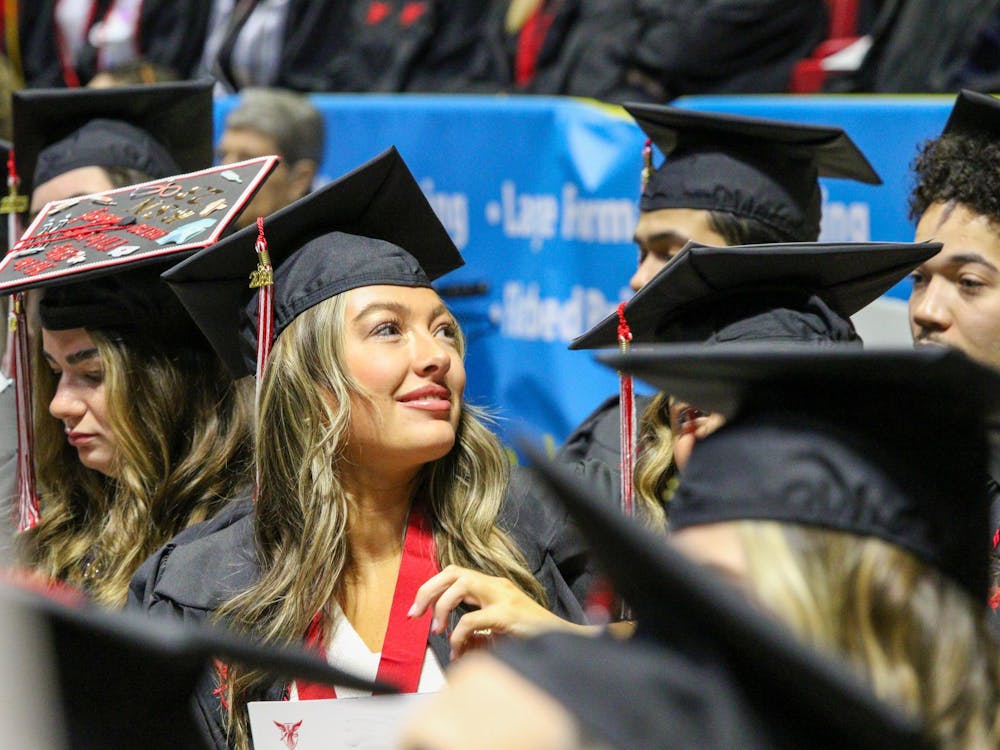Here were the states (including Washington, D.C.) with the smallest to largest gender pay gap:
1. New York, 11 percent
2. Delaware, 11 percent
3. Florida, 13 percent
...
40. Indiana, 24 percent
...
49. West Virginia, 29 percent
50. Louisiana, 32 percent
51. Wyoming, 36 percent
The average wage gap between men and women nationwide was 80 percent, according to The American Association of University Women.
A recent report shows Indiana has one of the higher pay wage gaps in the country.
A study published in September by The American Association of University Women found that Indiana is ranked 40 out of the 50 states and Washington D.C. for wage gaps, with women earning 76 cents to every dollar a man earns. This is a 24 percent wage gap compared to New York, ranked No. 1, which has just an 11 percent gap. The study used data from the Bureau of Labor Statistics and the U.S. Census Bureau and found that the United States averaged a 20 percent wage gap.
Michael Hicks, a professor of business and economic research cautions people "about paying too much attention to that UW study.”
Hicks explains that the gender pay gap is more complex and not a labor market problem like AAUW portrays.
“What the media has done a poor job in is portraying this as primarily a labor market problem instead of a cultural issue about occupation and choice,” Hicks said. “If you were to do an individual study, the right kind of study, then you would find that the size in unexplained variation of wages, the amount of wage differences explained by gender, drops down to single digit numbers.
“The explainable difference between genders are based on other things. They are based on things like women can give birth more often than men, so one result of that is women chose careers that offer for flexibility for child birth.”
Hicks said that choice of occupation, along with the level of education, are huge factors that play into pay gaps among men and women, which is something he said AAUW did not properly account for.
"All of those things help determine the salary regardless of whether or not you are a man,” Hicks said. “So if you don’t account for those in your analysis, then you are telling a grand lie to everyone who thinks there is a huge gender inequality problem at the labor market issue. A closer examination of this study makes it seem like companies are hiring women and screwing them over by paying them less — that’s just utter nonsense."
Hicks believes that women are choosing occupations from their educational achievements that give them more flexibility and sometimes “that flexibility comes at a cost” in terms of salary.
“People [are] entirely being given the wrong impression that this is about discrimination, and [it's] rather more often about educational and career choices,” he said. “I internally reject the sort of Marxian notion that there’s a man club that wants women to not make that much money and a women club that is fighting back — that Marxian interpretation doesn't stour when it comes down to the actual human being decisions.”
Adrianna Nagle, a freshman public relations major, also thinks the pay gap stems from choices.
“[Gender pay gaps] exists but not in the way people think,” Nagle said. “It's a product of the choices that women make, not based on discrimination. Applying the slightest bit of economic or business reasoning to it, and it falls flat, as well as the laws we have to ensure equal pay and discourage discrimination.”
Nagle said she believes people will just “blindly look at the statics and believe it instead of looking into it further,” which spurs misconceptions.
“When you really think about it, the gap can't be just sexism because if a business could get away with paying a woman a fraction of what they could pay a man, there would never be any men hired. Businesses want to maximize profit and paying workers more is going to take a chunk out of that profit, not to mention the Equal Pay Act which made discriminatory pay illegal,” Nagle said. “The gap is there, but it isn't a product of institutional sexism or something to that effect.”
Emma Engler, Feminists for Action president, was not surprised by AAUW’s report and actually believes that discrimination and wage inequality are an issue within gender pay gaps.
“I do believe that both [wage inequality and wage discrimination] are happening both in Indiana and the nation,” Engler said. “It’s a non-disputable fact that the pay gap exists. There are studies and evidence to back it, but wage discrimination is an issue here as well. As a white person, I have never really experienced wage discrimination, only wage inequality. ”
Ian Gonzales, a sophomore secondary social studies education and history major, said that gender pay gap is a “huge, multifaceted issue.”
“When looking day to day at total averages, 76 cents is more or less correct,” Gonzales said. “If we do withhold for the role of women in traditional society and job options, women still make 10-15 cents less than men merely because of their gender.”
Hicks thinks in order to see change among the gender pay gap, it's important “to make all occupations more flexible for both men and women.”
Hicks also noted the possibility of the pay gap shrinking within the next 10 to 20 years as more women are pursuing a college degree.
“More women have [begun attending college] from the time when I went to college in the fall of 1980 to the fall of 2000. That was a 20-year period so those gender dynamics have flipped," Hicks said. "And it continues to shift so as long as women pursue careers that pay better — the pay gaps will shrink.”
Cheri Ellefson, a women’s and gender studies program instructor, believes spreading awareness and taking action is important in terms of change.
“Writing to legislators on this issue is critical,” Ellefson said. “I think it’s also helpful for women to understand the value and skill of negotiating a fair salary. We teach students how to polish a resume and strong interview strategies, but demonstrating to women that they have the power to negotiate their salary — and understand their worth — is also valuable."





